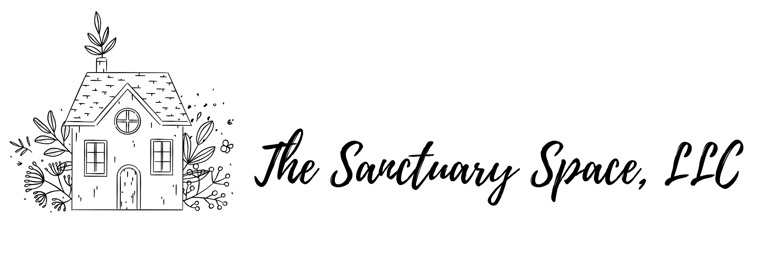
The Woman Life Freedom movement started in September 2022 following the death of Mahsa Jina Amini, becoming a catalyst for a long-awaited fight for human rights and an end to gender apartheid in Iran. These discriminatory, unjust, and violent conditions have taken a toll on the mental health and wellbeing of Iranian people.
Recognizing the significance of this women-led movement, we embarked on an arts-informed participatory action research project, utilizing a Mindful Arts-Based Photovoice Protocol to shed light on Iranian women’s experiences regarding discrimination, marginalization, censorship, and oppression and the impact of this on their mental health, having both lived in Iran and emigrated to the United States.
Art as Resistance: Photovoice for Connection, Exploration, and Empowerment with Iranian Freedom Fighters
VIDEO BY CHELSEA FAULKNER
The women who participated in this project shared powerful and layered stories about living under systemic oppression in Iran and the impact this has had on their identities, mental health, and sense of belonging. Many described societal trauma connected to censorship, strict gender norms, discrimination, and abuse of authority. Common experiences included suppression of self-expression, fear, and hypervigilance. These stories reflected not only the external control imposed by political and religious systems, but also the internalized weight of navigating daily life under surveillance and threat.
In response to these conditions, participants expressed a mix of pain, resilience, and hope. Their artwork and narratives highlighted anger, sadness, and loss, alongside resistance, cultural pride, advocacy, and a longing for freedom. Many found strength in their Iranian identity, community connection, and creative self-expression. Post-migration experiences added another layer, feelings of isolation, identity shifts, privilege, and displacement were common. Yet, through this collective process, the women voiced a vision for a freer and more just future, reclaiming their stories through art as both personal expression and social resistance.
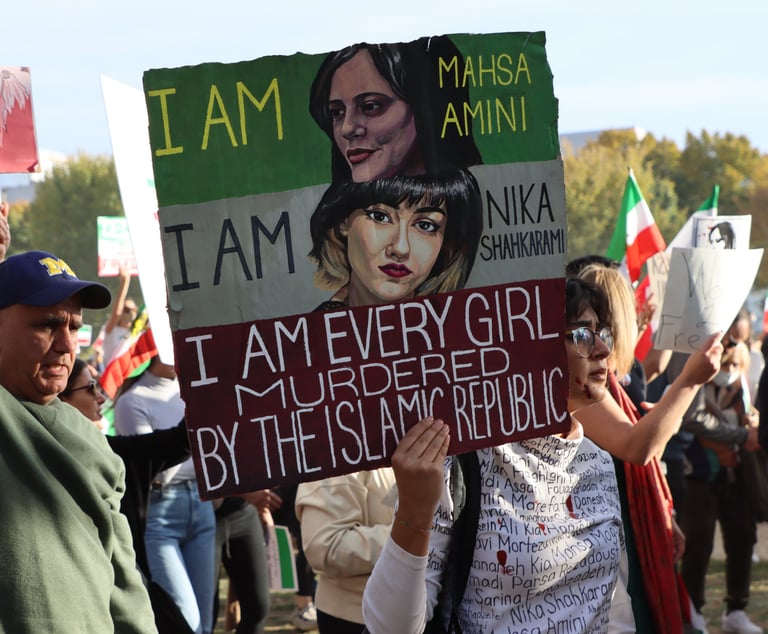

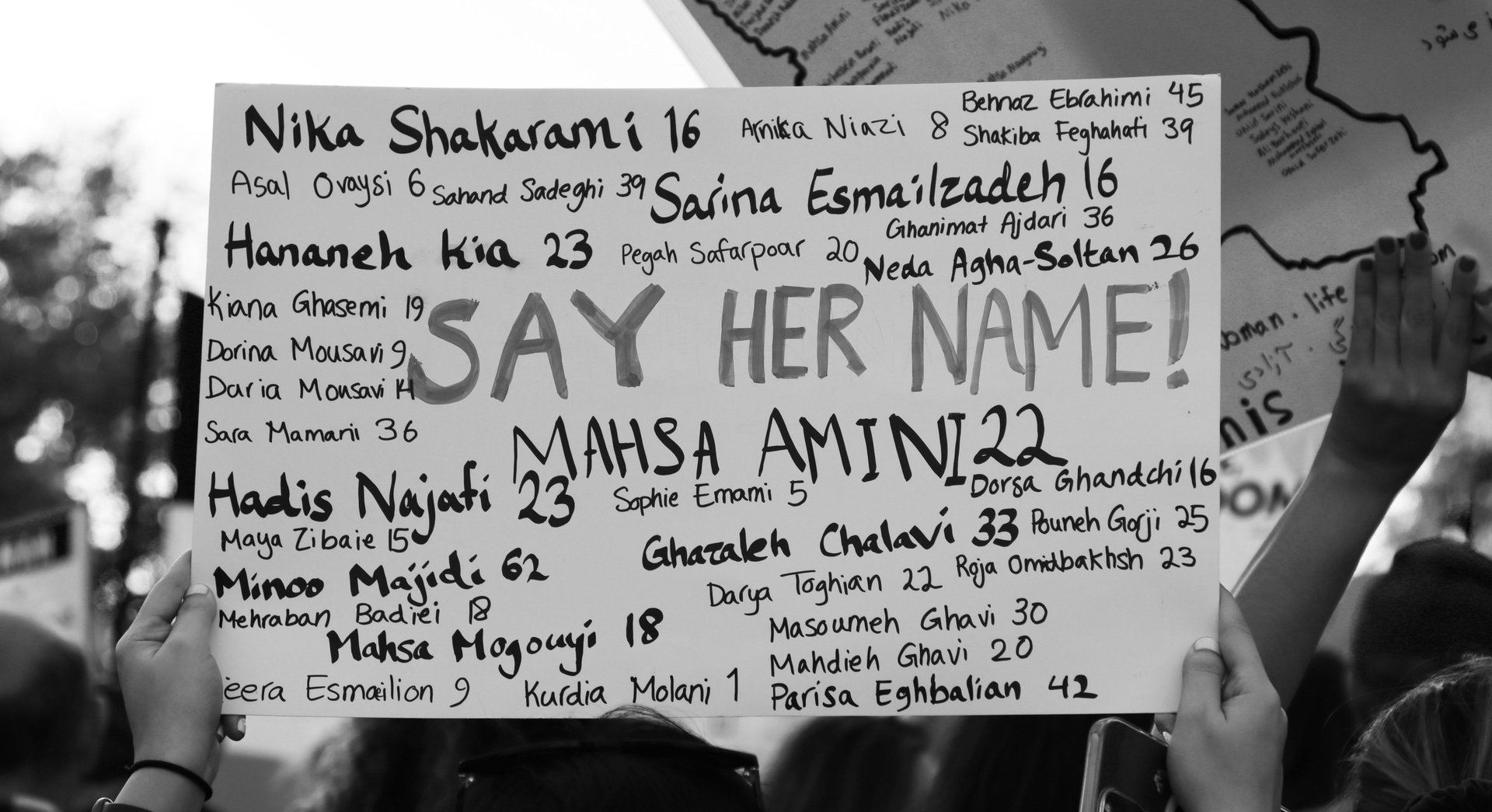
Zine from Photovoice Project
This zine includes artwork, graphic recordings, and preliminary results from this research. A co-collaborator in the study created the graphic recordings illustrating key topics discussed throughout sessions.
Photographs from Exhibition
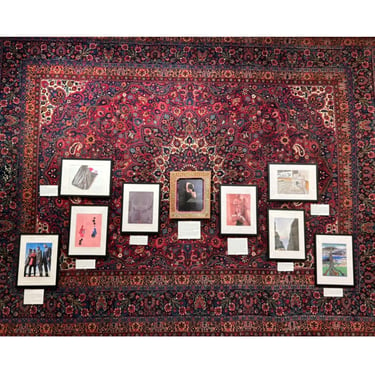
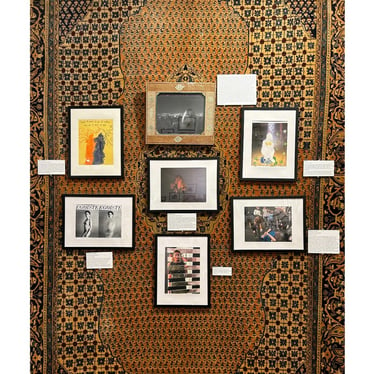
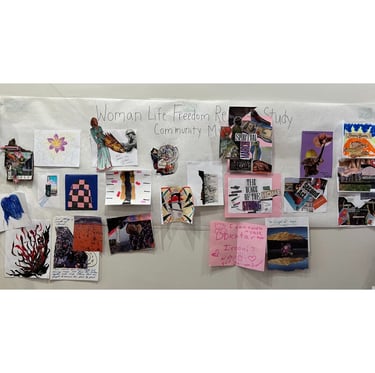
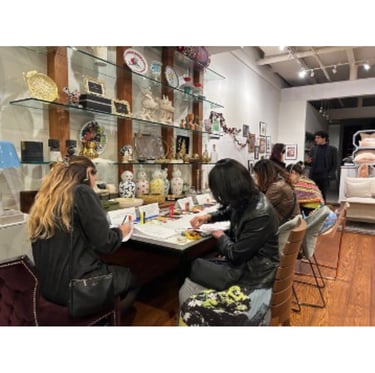




We selected a Persian rug gallery, PARISA: Rugs & Décor, for the exhibition space, given this is a significant aspect within the culture. A Persian proverb, "where thy carpet lies is thy home", reinforces the profound connection between Iranians and Persian rugs symbolizing a sense of home, culture, and traditions (Haider, n.d., p. 1). For Iranian immigrants, these rugs offer solace, mitigating the disorienting effects of culture shock in a foreign land (Forghanifar, 2019).
COMMUNITY MURAL - AUDIENCE'S RESPONSE TO EXHIBITION
EXHIBITION WALL AT PARISA'S RUGS & DECOR
EXHIBITION WALL AT PARISA'S RUGS & DECOR
COMMUNITY ART-MAKING AT EXHIBITION
Hossein Pirasteh, an artist based in Shiraz, Iran, led a virtual workshop for the co-collaborators on Khatam design, its history, and specific crafting techniques. Khatam is a traditional craft where small pieces of wood, bone, and metal are meticulously inlayed onto wooden objects, resulting in intricate and beautiful geometric designs (Shojanoori, 2014). This workshop provided an opportunity for the co-collaborators to create their own designs for Khatam, which were sent back to Hossein to inlay the designs within picture frames for the final exhibition in Philadelphia. The co-collaborators were able to take the custom-made pieces of Khatam home with them at the end of the study as compensation for their time spent in the project.
Find out more about Khatam and Hossein's work in the zine to the left.
Hossein's Instagram
Hossein's Email: Phosein5@gmail.com
Co-Researcher's Artwork from Photovoice Project
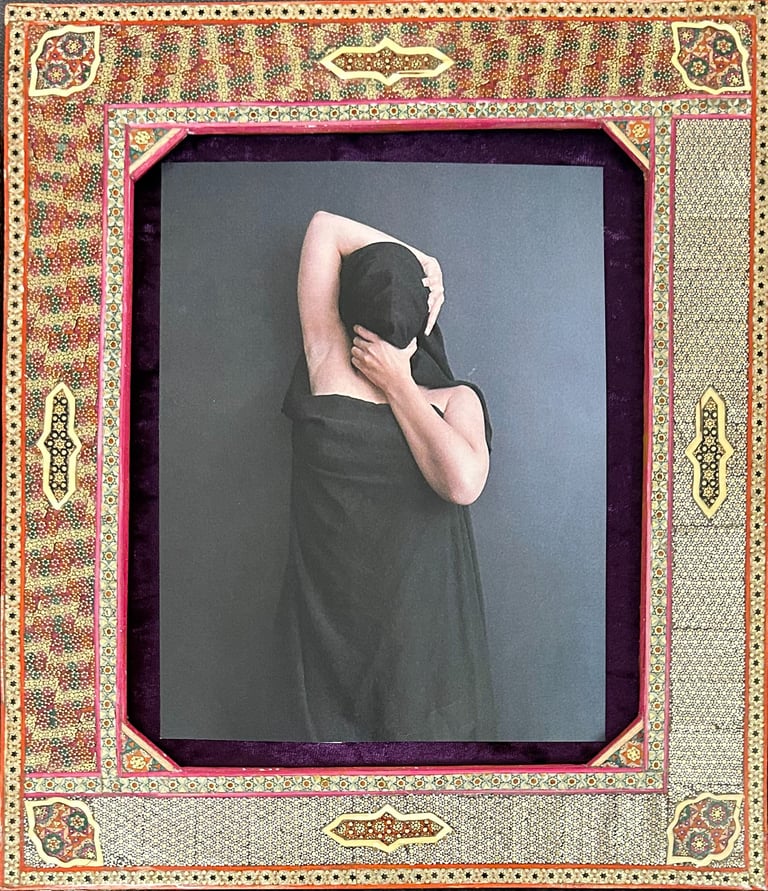

Suffocation of Censorship
"The artwork depicts a woman draped in a chador against a stark black background. The chador envelops her entire head and body, leaving only her hand exposed. This hand, which emerges from the darkness, grasps at the fabric, clutching it tightly, as if struggling to break free even by losing her life. The darkness around her symbolizes the oppressive atmosphere of censorship, suffocating and isolating her from the world. The chador, often associated with traditional dress and modesty, takes on a dual role here, representing both cultural norms and the restrictive nature of censorship. Her exposed hand becomes the focal point, conveying a sense of desperation and a longing for freedom. It struggles against the confines of the chador, seeking to express itself and break through the stifling silence imposed upon her. The image poignantly captures the suffocation and frustration of censorship, where the desire for self-expression is suppressed but not extinguished."
-Anonymous
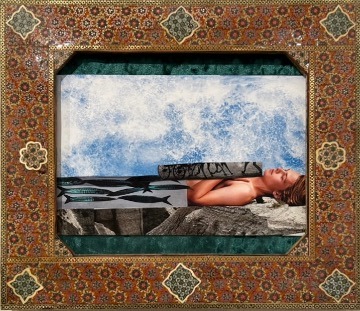

"My experiences of oppression and marginalization have felt like I have been under the pressure of the whole sea while laying on the rocks of cultural and gender discrimination. To compound these factors even more, the government in Iran censored me with a heavy rock on my chest making it hard to breath and making sure I am mute."
-Anonymous
Pressure of Depth
"I hope..." Sound Installation
Each person involved in the research group wrote a statement following the prompt "I hope..." that was added within the layers of a sound installation created for the exhibition. The sound installation was designed by Dr. Sepehr Pirasteh, a composer and sound artist based in Philadelphia.
Here is one of the "I hope..." statements:
"I hope that as the artworks, our voices, and music come together in this gallery, they resonate with the shared struggle against oppression, censorship, and those who disregard human rights. My hope is to inspire unity and foster change for all human beings, especially for Iranians, not only in Iran, but also in all Iranian communities around the world. I hope we can engage in a process of defamiliarization through art, encouraging us to reevaluate the concepts we often take for granted, and prompting us to deeply contemplate our shared humanity."
-Anonymous
The sound installation includes 4 audio channels, each playing a different person's response to the "I hope..." prompt. Dr. Pirasteh said
“ each one of those individuals' narratives are bringing unique musical elements that were not repeated in any of the other channels, but once you stand in the middle of the room, combining all the channels, you could hear the whole harmony showing the unity and the purpose of gathering together as a community fighting together for social change. The parts that are louder are showing the social disobedience and the voices that are whispering are the voices that are showing fear in speaking up.”
The dissonant and chaotic effect created by the speakers each playing different recordings of readings of the “I hope...” prompt could have mimicked the experiences of the co-collaborators and many other Iranian people hoping and fighting for change with the Islamic Republic of Iran over the last 44 years. This mirrors many voices not always being heard clearly and purposefully censored. It also shows the safe space that was created within this group to talk about these issues, but still the fear of speaking outside of that safe zone.
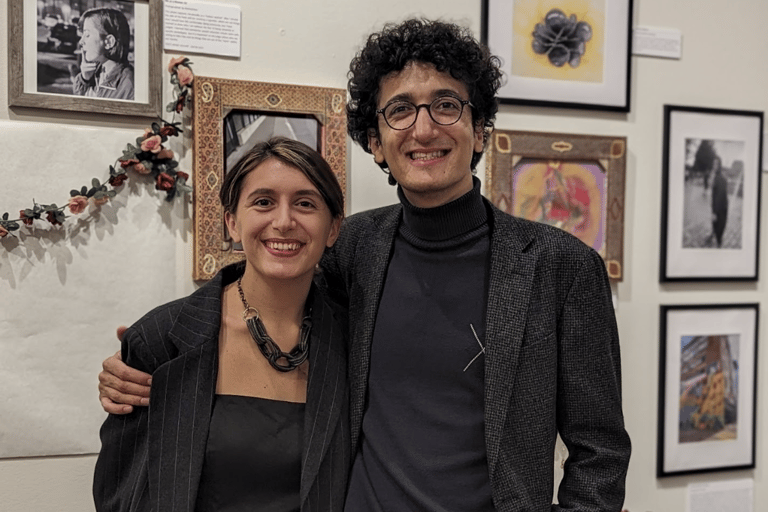

Photo of Chelsea Faulkner and Dr. Sepehr Pirasteh at exhibition
Dr. Pirasteh's Email: spirastehmusic@gmail.com
